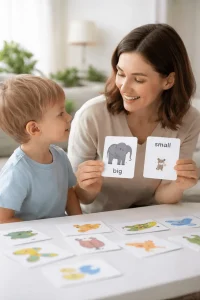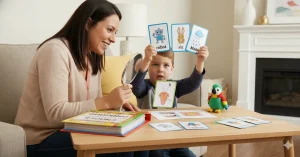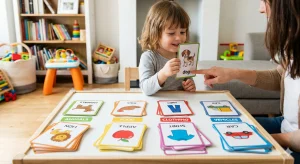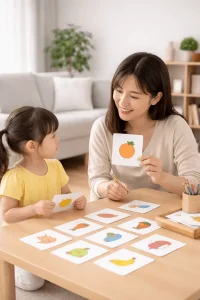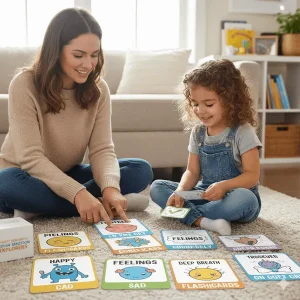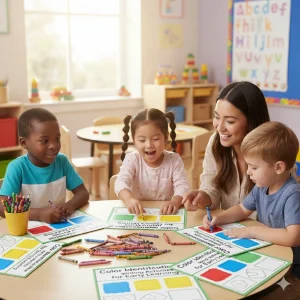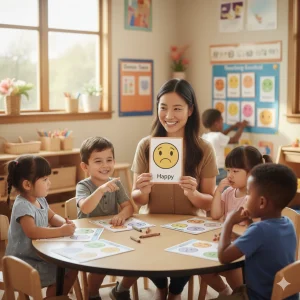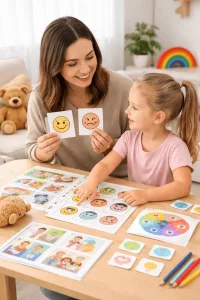Top Tools and Techniques to Help Kids Regulate Their Emotions
By Wellness Hub
Last Updated: August 9, 2025
Is your child having meltdowns that seem to come out of nowhere? Whether it’s a full-blown tantrum over a lost toy or quiet tears of frustration, emotional outbursts can feel overwhelming—for both kids and caregivers. But behind every big emotion is a child still learning how to cope, communicate, and self-soothe.
This is where emotional regulation becomes a game-changer. It’s not just about calming a child down in the moment—it’s about teaching them the lifelong skill of recognizing, understanding, and managing their feelings in a healthy, confident way. Kids who learn how to regulate their emotions early are more resilient, focused, and socially connected.
The good news? You don’t need complicated therapies or fancy gadgets. There are simple, science-backed tools—like breathing techniques, sensory play, and creative expression—that can make a big difference. In this guide, you’ll discover powerful strategies to help your child handle big emotions with calm and confidence. Because progress—not perfection—is the goal.
Understanding Emotional Regulation in Kids
Emotional regulation might sound like a big term. However, it simply means managing and responding to feelings in a helpful way. For children, learning this skill is like building a lifelong emotional toolkit. It teaches them what to do when they feel angry, sad, scared, or overly excited—so emotions don’t take over.
For example, picture a child frustrated while solving a puzzle. Without emotional regulation, that frustration can spiral into a meltdown—tears, yelling, and stress. But if the child knows how to breathe deeply or ask for help, the situation becomes manageable. They might still feel upset, but now they have the tools to calm down and try again.
This is more than avoiding tantrums. It’s about building resilience, emotional awareness, and problem-solving skills for life.
Learning to manage emotions early is essential. It builds emotional intelligence and supports mental health. It also helps children form stronger social bonds and stay focused in school. As a result, kids who regulate their emotions tend to get along with others, bounce back from setbacks, and stay on task. Most importantly, they are less likely to develop anxiety or depression as they grow older.
Breathing Techniques for Emotional Control
Breathing is a powerful tool for emotional regulation because it directly connects to the part of the brain that controls our stress response. By guiding your child through simple and fun breathing exercises, you can help them calm down when emotions run high. Here are some engaging techniques that make deep breathing a playful and effective way to manage emotions:

1. Rainbow Breathing
Rainbow Breathing combines creativity with calm. To try this, have your child imagine or draw a rainbow. Then, guide them to trace each line of the rainbow slowly with their finger. As they trace upwards, they take a deep breath in, and as they trace downwards, they breathe out. This visual and tactile method not only makes the breathing exercise more engaging but also helps your child focus, making it easier for them to calm their mind and body.
2. Birthday Cake Breathing
Who doesn’t love a birthday celebration? With Birthday Cake Breathing, you can turn a calming exercise into a fun and familiar activity. Ask your child to pretend they’re holding a delicious birthday cake. Have them take a deep breath in as if smelling the sweet aroma, then blow out the candles by exhaling deeply. You can count the candles together—one, two, three, all the way to five—to make the exercise last longer and provide a sense of achievement as they “blow out” each candle.
3. Blow Bubbles and Pinwheels
Blowing bubbles isn’t just for fun—it’s also a sneaky way to encourage deep breathing. Hand your child a bottle of bubbles and let them practice taking deep breaths in and slow, steady breaths out as they blow bubbles. If bubbles aren’t available, a pinwheel can work just as well. The goal is to focus on the long exhale, which naturally calms the nervous system and makes the child feel more at ease.
4. Square Breathing
Square Breathing is a simple yet effective technique that helps children calm down by focusing on their breath in a structured way. Guide your child to imagine drawing a square in the air or on their leg with their finger. As they trace the first side of the square, they take a breath in for four counts. On the second side, they hold their breath for four counts. For the third side, they breathe out for four counts, and finally, they hold their breath again for four counts on the last side. Repeating this pattern a few times helps create a rhythm that can quickly soothe feelings of anxiety or stress.
Creative Expression as a Calm-Down Tool
When kids can’t find the right words, creative activities can help them express and manage their emotions. Drawing, painting, working with clay, singing, and dancing offer safe and fun ways for children to show how they feel without speaking. These activities not only engage their imagination but also help calm their minds, making them great tools for emotional regulation.
1. Drawing and Painting
Art allows kids to express their emotions visually, which can be helpful when they struggle to explain how they feel. Encourage your child to draw what they’re feeling or paint whatever comes to mind. It doesn’t have to be perfect or even make sense—the act of creating is what matters. This can help kids let go of their emotions, understand their feelings better, and find relief. Whether they’re scribbling with crayons or painting a peaceful scene, art gives them a way to explore their inner world without words.
2. Modeling Clay
Playing with modeling clay can be very calming for kids. The soft, squishy texture is great for squeezing, rolling, and shaping, providing both a sensory experience and a way to focus their thoughts. Working with clay allows kids to express their emotions through touch, which is especially helpful for those who need a hands-on way to calm down. Whether they create shapes or just enjoy squeezing the clay, this activity can help reduce stress and improve their mood.
3. Singing and Dancing
Singing and dancing are natural ways for kids to express their feelings and get their bodies moving. It involves deep breathing, which helps calm the body. Encourage your child to make up their own songs or sing along to their favorite tunes. Dancing allows them to use their whole body to release energy and tension. It doesn’t have to be perfect—just let them move and enjoy the music. These activities are fun and help kids feel better, turning tough moments into joyful ones.
Physical Activities to Release Emotions
Physical activity is one of the most effective ways for kids to release pent-up emotions and regain their sense of calm.
Moving the body not only helps burn off excess energy but also triggers the release of endorphins—natural mood lifters that make kids feel better almost instantly.
Let’s explore some simple yet powerful physical activities that can help children manage their emotions in a healthy way.
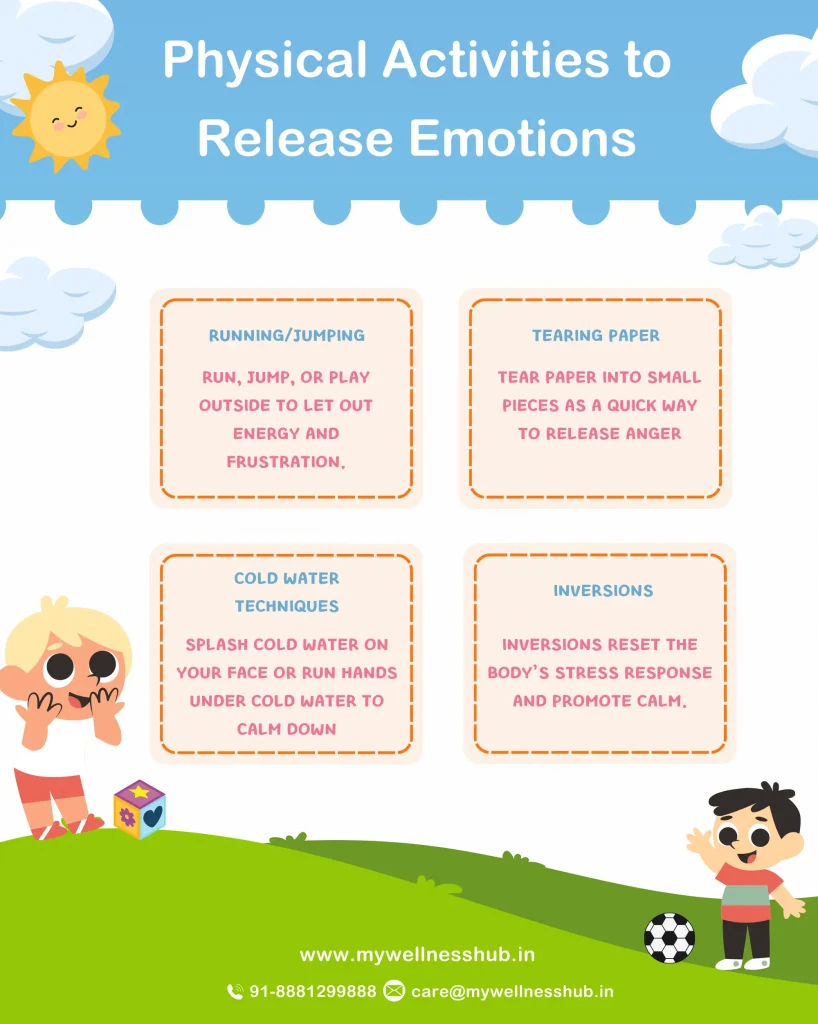
1. Simple Movements
Sometimes, all it takes to help a child calm down is a bit of movement. Running, jumping, or simply playing outside can release built-up frustration and energy. Try activities like running laps in the yard, jumping on a trampoline, or playing a quick game of tag. These fun movements help kids redirect their emotions into something more positive. Encourage your child to move their body when they feel overwhelmed. It can make a big difference in how they manage their emotions.
2. Tearing Paper
Tearing paper is a quick and safe way for kids to let out anger and stress. The act of ripping something apart can provide an immediate sense of relief and control, especially when emotions feel big and unmanageable. You can make this activity even more structured by challenging your child to tear the paper into a certain number of pieces or shapes, turning it into a fun yet calming task. It’s a simple, mess-free way to help kids vent their feelings without needing to say a word.
3. Cold Water Techniques
Cold water can be incredibly soothing for the nervous system. Simple activities like splashing water on the face or running hands under a cold tap help calm a child. You can also try placing a cold compress on their forehead or neck. These actions work because the cold sensation tells the brain to slow down and relax. As a result, kids can regain control more easily. This method is quick, simple, and works almost anywhere. It provides instant comfort during stressful moments.
4. Inversions
Inversions, such as bending over to touch toes or doing simple yoga poses like downward dog, can have a restorative effect on the nervous system. These movements stimulate the vestibular system, which is responsible for balance and spatial orientation, and help to reset the body’s stress response. Encourage your child to try gentle inversions whenever they feel anxious or upset. Not only do these poses help in calming the mind, but they also provide a fun way for kids to explore their bodies and how they move.
Using Mental Distractions to Shift Focus
When emotions run high, shifting focus to something simple can help a child calm down. Mental distractions are a great way to redirect attention from intense feelings, giving the brain a chance to relax. Here are some easy techniques to help kids manage their emotions.
1. Counting Games
Counting is a simple yet effective way to distract a child from their emotions. Activities like counting to ten, counting down from a hundred, or counting objects in the room can provide a quick break from overwhelming feelings. Counting requires focus, which helps to calm the mind. To make it more fun, you can turn it into a game—ask your child to count by twos, fives, or tens, or have them find a certain number of blue objects around them. It’s a quick strategy that can be done anywhere and anytime.
2. Watching Fish or Glitter Jars
Calming visual activities, like watching fish swim in a tank or shaking a glitter jar, can soothe children easily. The slow, repetitive movements of fish or glitter settling in a jar provide a gentle distraction that calms the mind. Fish tanks create a peaceful scene that draws a child’s attention, encouraging them to relax. Glitter jars—filled with water, glitter, and a bit of glue—can be shaken and watched as the glitter slowly settles to the bottom. These activities are not just pretty to look at; they help slow down racing thoughts and are a simple yet effective tool for managing emotions.
3. Humor and Laughter
A good laugh can work wonders when emotions are high. Humor helps lighten the mood and ease tension. Telling jokes, making funny faces, or engaging in silly play can quickly turn a tough moment around. Laughter releases endorphins, which are the body’s natural feel-good chemicals, helping kids feel better fast. It’s okay to be goofy—sometimes, a little silliness is all it takes to shift a child’s focus from frustration or sadness to joy. Just remember, humor works best when the child is starting to calm down and is ready to engage.
The Role of Sensory Tools in Emotional Regulation
Sensory tools are great for helping kids manage their emotions, especially when they feel overwhelmed or anxious. These tools engage the senses—like touch, sight, and sound—to help kids feel grounded and more in control. Adding sensory activities to your child’s routine can give them a comforting way to handle their feelings and find calm. Here are some effective sensory tools that can support emotional regulation:
1. Mad Box
A Mad Box is a personalized kit filled with sensory items that help children calm down during stressful times. You can fill it with things like playdough, stress balls, fidget toys, or soft fabrics—anything that feels soothing to touch and helps your child focus. The idea is simple: when your child feels overwhelmed, they can grab their Mad Box and choose an item to help them calm down. It’s like having a special kit for emotional emergencies, giving them comfort and control. You can make this a fun project by involving your child in picking out their favorite calming items.
2. Nature-Based Activities
Spending time in nature is one of the most calming experiences for kids. Not only does it offer a change of scenery, but it also provides gentle sensory input that supports emotional balance. For example, simple activities like collecting leaves, arranging rocks, or making art with natural materials help engage the senses and connect children to the peaceful rhythms of the outdoors. In addition, even quiet moments—like walking through the park, watching clouds drift by, or listening to birds chirp—can soothe an overstimulated nervous system. Ultimately, nature-based activities create a quiet and restorative space where kids can relax, reset, and feel grounded. As a result, they offer a much-needed break from the constant buzz of screens, noise, and daily pressures.
Emotional Regulation Techniques
| Technique | Description | Examples |
|---|---|---|
| Breathing Exercises | Breathing techniques help to slow down the body’s stress response, promoting relaxation and reducing anxiety. These exercises are simple, quick, and can be done anywhere, making them highly effective for calming the mind and body. | – Rainbow Breathing: Trace a rainbow while breathing in and out. – Square Breathing: Breathe in, hold, breathe out, and hold, tracing a square pattern. |
| Creative Expression | Engaging in creative activities allows children to express their emotions without needing words. These activities tap into the right brain, fostering calm and reducing stress through imaginative play and artistic expression. | – Drawing & Painting: Encourage drawing feelings or painting to express emotions. – Modeling Clay: Use clay to mold and create, providing a tactile outlet for stress relief. – Singing & Dancing: Express emotions through movement and song. |
| Physical Activities | Physical activities help release built-up energy and frustration, providing a healthy outlet for intense emotions. They engage the body in a way that naturally soothes the nervous system. | – Running & Jumping: Simple movements to burn off energy. – Tearing Paper: A safe way to release anger by tearing paper into small pieces. – Inversions & Yoga Poses: Use gentle yoga to reset the body’s stress response. |
| Mental Distractions | These techniques help shift a child’s focus away from overwhelming emotions to something simple and engaging, providing a mental break that helps in regaining control. | – Counting Games: Engage in counting tasks like counting objects or numbers. – Watching Fish/Glitter Jars: Calming visual activities that settle the mind. – Humor & Laughter: Diffuse tension with jokes or playful silliness. |
| Sensory Tools | Sensory tools engage the senses, providing tactile comfort and helping to ground children when emotions feel too big. These tools offer a direct way to self-soothe through touch and other sensory inputs. | – Mad Box: A personalized kit filled with calming items like playdough, stress balls, and fidget toys. – Nature-Based Activities: Use natural materials like leaves and rocks for calming art projects or simply spend time outdoors. |
Conclusion
Teaching kids how to manage their emotions is about giving them tools they can use throughout their lives. Simple techniques like breathing exercises, drawing, playing outside, or using sensory tools can make a big difference. These methods help kids understand their feelings and find ways to cope when they feel overwhelmed. By practicing these skills, kids learn that it’s okay to have big emotions and that there are healthy ways to handle them.
Every child is unique, so it’s important to try different techniques to see what works best. Be patient and supportive as your child explores these new tools. Remember, the goal isn’t to stop all difficult feelings but to help kids manage them better. With your guidance and the right approach, your child can learn to navigate their emotions successfully, leading to a happier and more confident future. For more support and resources, check out Wellness Hub. Keep encouraging your child—you’re doing great!
Frequently Asked Questions:
1. What are some effective techniques for emotional regulation in children?
Effective techniques for emotional regulation in children include breathing exercises, like Rainbow Breathing or Birthday Cake Breathing, creative activities such as drawing and painting, physical activities like running and jumping, and using sensory tools like stress balls or a Mad Box.
2. How can I help my child manage their emotions better?
You can help your child manage their emotions by teaching them simple tools and techniques such as breathing exercises, using sensory toys, engaging in physical activities, and providing a supportive and patient environment. Modeling calm behavior and involving them in choosing what helps them feel better are also important steps.
3. What is a Mad Box, and how does it help with emotional regulation?
A Mad Box is a sensory toolkit filled with items like playdough, fidget toys, or stress balls that children can use when they feel overwhelmed. These tools provide a tactile way for kids to focus and calm down, helping them manage their emotions in a safe and controlled manner.
4. Why is it important to teach kids emotional regulation?
Teaching kids emotional regulation is important because it helps them understand and manage their feelings in a healthy way. This skill not only improves their ability to cope with stress and frustration but also supports their overall mental health, social skills, and success in school and relationships.
5. What are some fun activities to help kids calm down?
Fun activities that can help kids calm down include blowing bubbles, using pinwheels, drawing, painting, singing, dancing, and engaging in nature-based activities like collecting leaves or arranging rocks. These activities make emotional regulation feel like play, making it easier for kids to participate and enjoy.
6. How can physical activities help kids manage their emotions?
Physical activities like running, jumping, tearing paper, or doing simple yoga poses help kids release pent-up energy and frustration. Movement triggers the release of endorphins, which naturally improve mood and reduce stress, making it easier for kids to manage their emotions.
7. Are there any apps that can help kids with emotional regulation?
Yes, there are several apps designed to help kids with emotional regulation. For example, apps like Breathe Kids offer guided breathing exercises and activities tailored to children’s needs, making it easier for them to learn and practice these calming techniques in a fun and interactive way.
8. How can I encourage my child to use emotional regulation techniques?
Encourage your child to use emotional regulation techniques by making them a regular part of their daily routine, modeling the behavior yourself, and praising their efforts. You can also involve them in choosing which tools and activities they enjoy the most, making the process collaborative and engaging.
9. How can I create a calm-down space at home for my child?
Creating a calm-down space at home involves setting up a quiet corner with comforting items like pillows, soft blankets, sensory tools, and calming visuals like glitter jars or pictures of nature. This dedicated space provides your child with a safe environment where they can go to relax and practice their emotional regulation techniques.
10. What role do parents play in helping children learn emotional regulation?
Parents play a crucial role in helping children learn emotional regulation by modeling calm behavior, providing consistent support, and being patient as their child learns these new skills. Parents can also guide their child through different techniques, ask for their feedback, and make emotional regulation a positive and engaging experience. Your involvement and encouragement are key to your child’s success in managing their emotions.
About Author:
Lasya Vooturi,
Clinical Psychologist (A) & Behavioral Therapist
Lasya holds a Professional Diploma in Clinical Psychology from Amity University, where she deepened her understanding of psychological principles from March 2023 to March 2024. With over a year of dedicated experience as a Behavioral Therapist, Lasya has honed her skills in applying effective therapy techniques tailored to individual needs. Fluent in Telugu, Hindi, and English, she is adept at connecting with a diverse range of clients, ensuring comprehensive communication and understanding. Lasya’s approach is grounded in empathy and scientific rigor, making her a trusted ally in navigating mental health challenges.
Book your Free Consultation Today
Parent/Caregiver Info:
Client’s Details:
* Error Message
